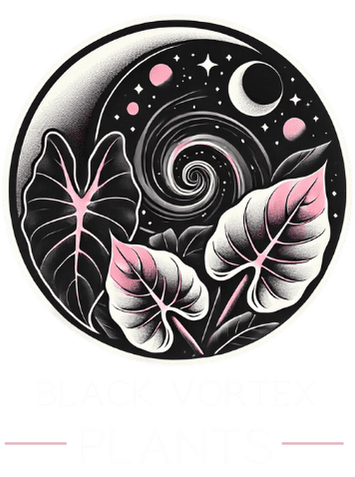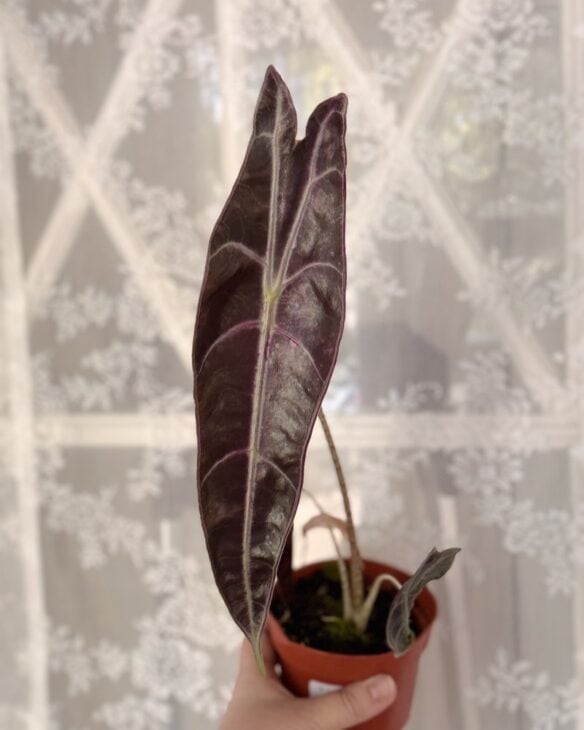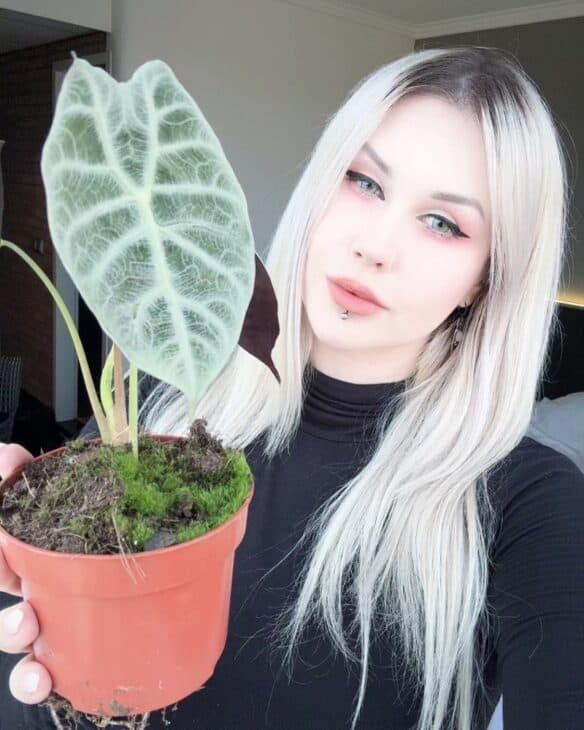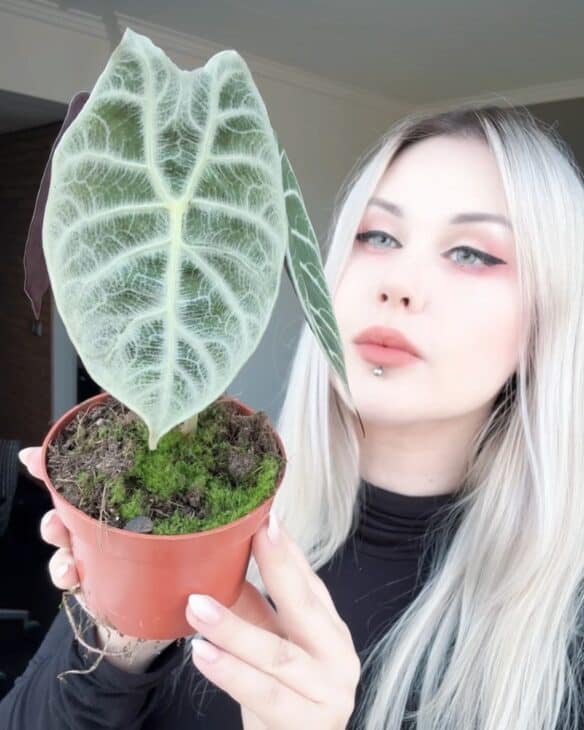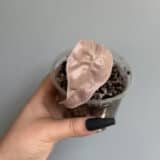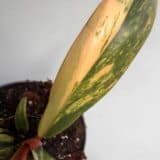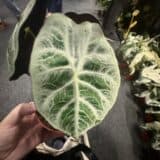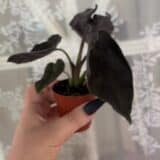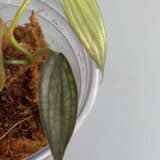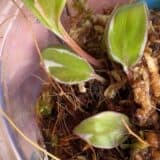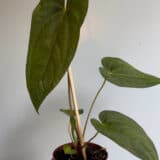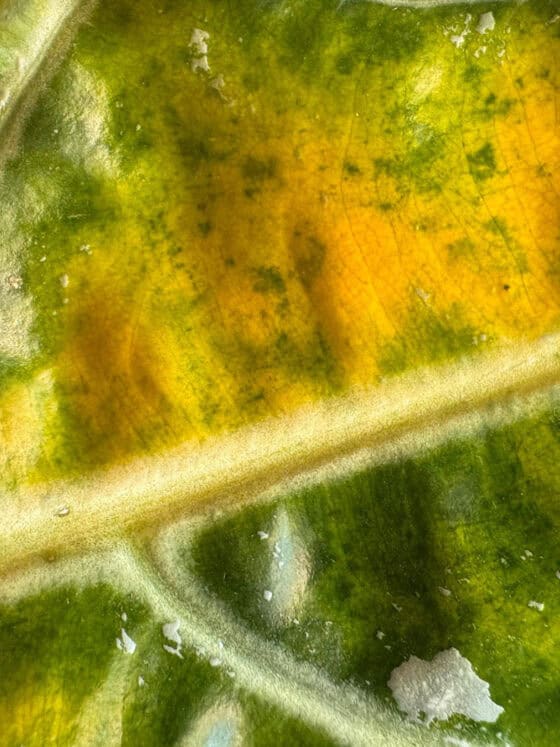I attended the MyBotanika event, a rare plant market and plant fair that is held regularly. This time, MyBotanika took place in Houten, the Netherlands, on August 31, 2024. I traveled all the way from Finland to attend and brought back several delightful rare plants! In this post, I'll share my experiences from the event and offer my top tips in case you ever decide to participate yourself.
Share
I stumbled upon the MyBotanika event quite by chance on social media and realized it was happening in about a week. I’m Finnish and live in Finland, but I’m an experienced traveler and have visited the Netherlands several times. For example, the maze-like Schiphol Airport in Amsterdam, with its railway station, is fairly familiar to me. So, I figured there wouldn’t be as much preparation needed as if I were heading to a completely unfamiliar place.
I hesitated for a moment, wondering if my financial situation could handle the trip. Well, technically it couldn’t—but who cares! Winter was just around the corner, and moving plants around would become much more difficult for several months. So, I booked the tickets.
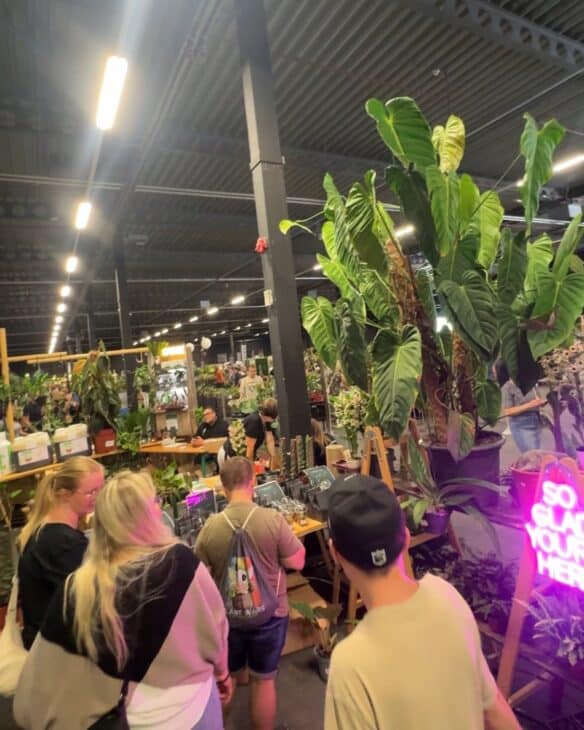
What was the event like?
The event seemed to be incredibly popular. I thought I had arrived ridiculously early by showing up before the doors opened, but there was already a long line stretching outside. Fortunately, once the doors opened, the line moved very quickly.
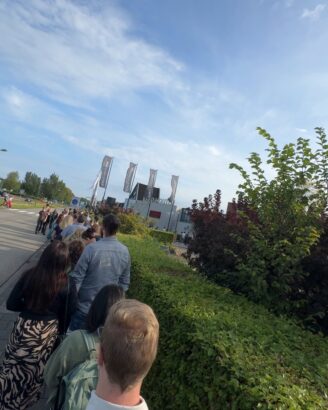
When I stepped into Expo Houten, I was greeted by what can only be described as a true paradise. Right at the entrance, I was welcomed by an unbelievably beautiful Philodendron verrucosum, which I saw in person for the first time, and it was enormous. At that moment, I almost felt breathless—the plant’s colors were something incredibly magical. Normally, I’m not that interested in green leaves—black and pink are more my thing—and the online pictures of the verrucosum hadn’t really impressed me, but seeing it live was absolutely mind-blowing.
There was something for everyone at the event. Aroids, orchids, terrarium plants, succulents, carnivorous plants, and more! The biggest stars of the show were probably the aroids, especially Alocasia, Anthurium, Philodendron, and Monstera. Naturally, I was most interested in the variegated aroids. And there were plenty of those! A few booths even had heaps of Alocasia Black Velvet Pink variegated plants. I had to keep reminding myself, “You already have one, you already have one, you already have one…” to resist the urge to take those cotton candy-colored beauties home with me.
Different dark forms of Colocasia esculenta were my “gateway drug” into the deeper world of houseplant collecting, so it was amazing to see so many of them as well. My own Colocasia esculenta ‘Redemption’ had a bit of a rough time spending the summer outside, and someone’s loose cat decided to turn it into a free toy, so it was wonderful to see a Redemption in its full glory live.
What plants did I bring back with me?
The event’s sponsor, Downtown Plant Club, had a fairly large booth, which I headed to first. There, I spotted the Alocasia longiloba ‘Purple’, a plant I had been dreaming of, and it immediately came with me. I hesitated a bit about whether to also take the Alocasia loco, but I decided that I could order the loco separately later. Instead, my eyes landed on a plant I had only heard about for the first time just a couple of weeks ago—Alocasia watsoniana ‘Lightning’. It was so stunning that I couldn’t leave it behind. I knew that transporting both of these plants would be risky, especially since the longiloba could be really challenging to get home without damage—it’s a rather tall plant, and packing it into my bag along with everything else would be much harder than, say, a baby plant that could fit into a Pringles can.
What kind of vendors were at MyBotanika?
There was a diverse range of vendors, with booth sizes varying from small market tables to larger displays with glass cabinets. Some vendors were smaller sellers or rare plant collectors selling from their personal collections. Others were bigger names in the industry. MyBotanika attracted major European importers, wholesalers, and retailers. I felt a little bit of my inner fangirl come out when I saw the booths of well-known brands like Plnts, Harmony Plants, Araflora, 4aroids and Equagenera.
Who can attend MyBotanika? Are international visitors welcome?
MyBotanika is open to everyone. You don’t need an invitation, you don’t have to be a vendor, and there are really no requirements at all. You could even not own a single plant and live in a cabin on the side of Mount Everest, and you’d still be welcome with a ticket. This time, the entrance fee was 10 euros, which I found to be extremely reasonable. The affordable ticket price left more of my budget for buying plants, which is a big plus! In Finland, many markets can sometimes cost several tens of euros, which leaves less budget for actual purchases.
While the event might not be directly accessible in terms of language, as it’s conducted bilingually in German and Dutch, the website is also translated into English, so there were no major issues. Additionally, I know a bit of German and a few words of Dutch, so what wasn’t translated at the event was still fairly understandable for me.
Is it safe to buy plants from MyBotanika?
Pests, mechanical damage, and diseases are part of plant collecting and are more the rule than the exception. If you’ve been collecting plants in large quantities over several years, it’s rare that you won’t encounter some kind of pest at some point. This applies to large stores as well—there isn’t always time to deal with invasions in big greenhouses, and I’ve never visited a large plant store where I didn’t see some bugs. In fact, even in big Finnish stores, you usually don’t have to dig too deep before you find some pests. Pests are part of the hobby, and that’s not likely to change anytime soon.
I’m also a parrot enthusiast, and in that community, European bird markets are notorious for being hotbeds of disease. So, I was curious about how things would be handled on the plant side. I actually brought a 10x loupe with me to scan leaves if needed. I was pleasantly surprised!
If I compare it to what I usually see in Finland, the pest situation was noticeably better: on a large scale, the plants were much cleaner than those in big Finnish plant stores. All the plants brought to the market were healthy and thriving. It would be foolish to bring a plant to a fair if it couldn’t be sold, as it would take up valuable space that could be used for another plant that could be sold. Moreover, the attendees of the event were passionate enthusiasts, so the plants were treated with much more respect by visitors than if, say, Karen from Huittinen came with her little darlings “just to look at the flowers.” (I sometimes want to scream when I see adults letting their kids trample the lower leaves of plants in stores or move plants around without caring if a leaf gets stuck between two pots.) For this reason, the plants were generally in better condition than what you’d find in larger Finnish stores.
Additionally, it seemed that plant cleanliness was a point of pride. Sellers of rare plants take this seriously and are very dedicated to the topic. Culturally, it was clear that there was a strong emotional connection among the vendors to their plants and their sale. Perhaps you could say that the vendors were more “in tune” with the plants they were selling, and plant collecting was a deeply significant part of their identity.
Was everything 100% pest-free or bug-free? Not entirely. I didn’t see any mealybugs, live spider mites, thrips infestations, or scale insects. However, I did spot some remnants of webbing on a couple of plants, but in both cases, the webbing wasn’t clearly identifiable as spider mite webbing, nor was it typical spider webbing—it was slightly rolled up. Some plants showed faint silver marks that hinted at past thrips activity. Additionally, I noticed some damage on a few leaves that I couldn’t identify. When I picked up one plant, a light beige, winged creature flew out from its leaves, but I couldn’t get a closer look to identify it. But that’s all I noticed. And there were thousands of plants at the event. Finding just a few minor issues among thousands is quite good. For example, if I compare it to large stores in Finland, MyBotanika was exceptionally clean. I recently visited all the major plant stores in the Helsinki area, and I didn’t find a single place where there wasn’t at least one badly infested plant. I didn’t see anything like that at MyBotanika.
The plants I purchased or received from the event didn’t show any signs of pests either, but when I unpacked them, I did find a small, 4 cm soil-covered worm-like creature in my bag, and from one of the moss bases, a moth or caterpillar of some sort emerged. Even though these could be harmless, if you don’t know the species, unfortunately, they need to be killed and disposed of. You shouldn’t release them outdoors (and you probably don’t want a pet moth caterpillar). I also spoke with Emilia from Millefolia, who explained that if it’s an invasive species and you release it into the wild, it could spread. So, if you bring plants from abroad and find anything suspicious, it’s crucial to prevent it from spreading.
The importance of quarantine cannot be emphasized enough. Open your bag far away from your other plants, immediately dispose of all packaging materials, don’t reuse any growth media, clean your transport containers, and extend your quarantine period beyond your usual practice. Also, remember to wash your hands thoroughly after handling new arrivals, and if you spend more time with them, it’s wise to change your clothes as well. It might sound like a lot, but since I also sell plants, it’s critically important to prevent the spread of pests.
Despite this “warning,” I would still say that bringing plants from MyBotanika is safe. In some ways, I might even argue that it could be safer than bringing plants from massive plant stores. Just remember to follow quarantine and cleanliness practices, and you’ll be just fine.
Being among the first customers, I received a gift bag that included an Anthurium magnificum x papillilaminum and two seed packets. One packet contains Anthurium crystallinum x Anthurium nigrolaminum gigi, and the other is a wildcard—Anthurium noid x Anthurium papillilaminum. If you’re not familiar with the terminology, “x” indicates a hybrid, with the parent plants listed on either side of the “x”. “Noid” simply means “No ID”, indicating that the second parent plant is unidentified. So, I know that one parent of this seed was A. papillilaminum, but the other is unknown. It’s exciting to see what will come from it!
The Mag x Papi was also quite large, but its plastic container was just the right size to fit into my luggage! Plus, it will be my first slightly more mature Anthurium. (The transport did cause two small creases on the leaf, which is a bit frustrating, but still, it’s not bad considering the size of the plant!)
I also met the incredibly friendly Tim (Plantmanruhr – TropiCal Leaf), from whom I have a Philodendron micans pink cutting. I bought the Alocasia chienlii ‘Antoro Velvet’ I had been dreaming of from Tim, and he also gifted me a Philodendron micans ‘Halo’.
The gifts didn’t stop there! I won an Anthurium warocqueanum in a giveaway from The Plant Account, and Myrthe, who runs the account, also gave me a Philodendron burle marx Fantasy as a bonus.
I also found a cute, adorable Alocasia x amazonica ‘Polly’ pink variegata at a great price from Berry of one_rootiful_mess, so that came home with me too. The good deals didn’t end there—toward the end of the event, the vendors started offering discounts. I was almost going to leave the Philodendron x serratum ‘Caramel Marble’ that I had been eyeing at JaRoRi Plants booth for quite a while on the shelf, but the sellers eventually made an offer I couldn’t refuse! This one was a well-rooted baby plant with multiple leaves, each beautifully variegated.
One of my goals for the event was to find a plant that was genuinely rare—maybe not a unicorn, but at least something from the upper tier of rare plants.
After much deliberation, I finally chose Alocasia azlanii variegata from PK Plants as my rare find of the event. The first time I visited the PK Plants booth, I noticed a beautiful, sturdy baby plant with the most stunning variegation on the entire table. Initially, I was there to check out a pinkish Anthurium and inquired about some other plants, so I didn’t ask about that particular leaf right away. I wasn’t entirely sure what it was, but I knew it had to be some kind of Alocasia. I went back a couple of times, and on my third visit, I finally asked what this plant that had so magically captivated me was.
In the end, I decided I’d rather buy this plant now, even if it was a bit pricier than what I might get if I ordered it from somewhere like Thailand, but I preferred to know exactly what I was buying, from whom, and where. The deal was made, and as a bonus, the shop owner, Philipp, gifted me an Alocasia odora ‘Okinawa silver’.
According to the Aroidpedia Okinawa silver is the only variegated variety of A. odora, and sometimes you’ll hear it referred to simply as Alocasia Okinawa or Alocasia Okinawa variegata. This can be compared to Alocasia Frydek. Sometimes, you’ll hear people mention “Alocasia Frydek variegata,” but in reality, it’s a variegated form of Alocasia micholitziana. So, “Frydek” itself refers to a variegated micholitziana, and the “green Frydek” is actually Alocasia micholitziana, sometimes referred to as “Green Velvet” – not Frydek. Similarly, in this case, the green plant is called Alocasia odora, and the white variegated form is ‘Okinawa silver’.
I ended up with a lot of plants! In fact, so many that due to the plants I received and won, there was much less space for transport than I had originally planned for—a positive problem to have!
“Was it easy?”
Bringing plants back is fairly easy. You can transport houseplants between EU countries in your luggage, as long as they fit entirely within it. This means you can’t carry a plant in your lap on the plane; it must fit in your bag, either under the seat in front of you or in the overhead storage. You are allowed to bring plants between EU countries in reasonable quantities and only for your personal use. That’s why I didn’t offer to bring back any plants on behalf of others. As long as you’re bringing the plants for yourself and not in bulk, everything is fine.
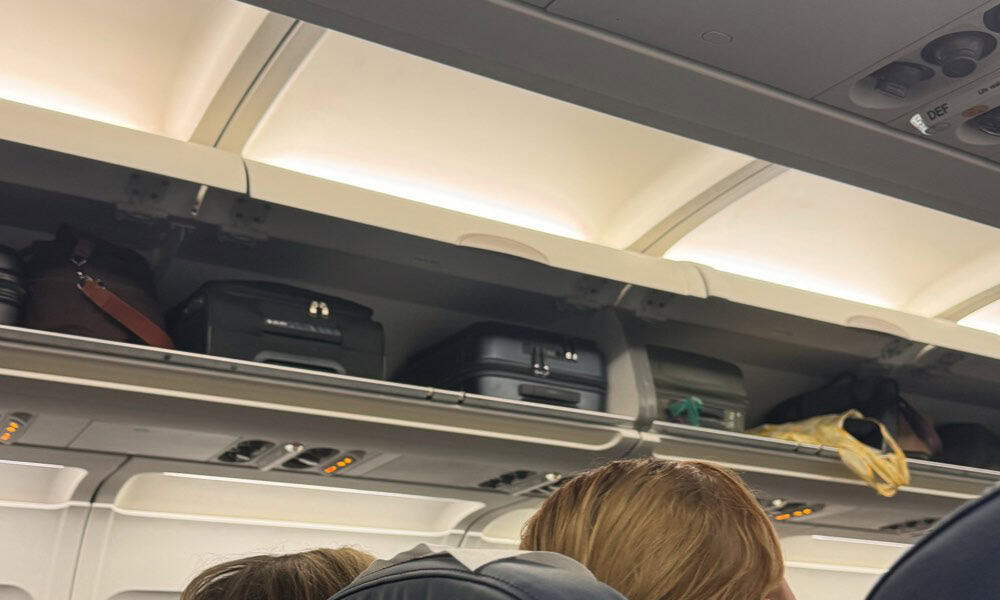
Remember that, for example, un-acclimated tissue-cultured plants are considered liquids in airport security. You’re allowed to carry up to one liter of liquids in total, with each container holding a maximum of 100ml. So, if you’re bringing a tissue-cultured baby plant, it must fit in the same one-liter bag as your deodorant and toothpaste. There’s quite a bit of risk of damage. Generally, anything moist that you could spread with a knife (like lip balm, face cream, or jelly) is considered a liquid on airplanes. So be mindful of this when selecting which plants to bring back.
If you’re an experienced traveler, the trip itself was relatively easy. However, if you’re not as comfortable navigating unfamiliar places, the journey might be a bit more complicated. My route looked something like this:
Outbound:
- Helsinki -> Flight to Copenhagen (layover) -> Flight to Amsterdam -> Train to Utrecht Centraal -> Train to Bunnik -> 20-minute walk to the hotel
- From the hotel: Uber to Expo Houten -> Uber back to the hotel
Return:
- 10-minute walk from the hotel to the bus stop -> Bus to Utrecht Centraal -> Train to Amsterdam -> Flight to Riga -> Flight to Helsinki
The timing for reservations was a bit tricky because prices start to rise, and nearby hotels tend to be fully booked. You have to strike while the iron is hot, and I just had a feeling that this was something I had to do right then.
If someone is reading this and isn’t used to traveling, it might be worth mentioning that I’m a bit obsessive about optimizing my trips. For example, you can fly to Amsterdam in about 2.5 hours—or it can take you 23 hours. And anything in between. This means that in this case, I spent hours finding a flight that 1) didn’t take too long, 2) allowed both carry-on luggage and a personal item (I didn’t want to put the plants in the hold where they could be thrown around), and 3) was at least semi-affordable. The most reasonable combination I found involved a 5.5-hour outbound trip and a return trip of just over 8 hours, both with layovers.
But, of course, it didn’t go quite as planned. When only the flight between Riga and Helsinki was left, some issues arose, and the flight was delayed by about five hours. That was a rough time because it meant the flight didn’t leave until just before 5 AM. Sleeping on the airport floor, anxious about expensive plants getting crushed in the bag—not exactly a dream scenario. (Yes, you can claim compensation for such a long delay. Additionally, the airline was “generous” enough to offer a grand total of 5 euros to spend on food at the airport. Great… With five euros, you might be able to buy a soda, a yogurt, or a chocolate bar at the airport. Whoopi-effin-doo.)
I optimized my hotel choice as well. If a hotel is really close to the convention center, it’s expensive. But if it’s far away, the trips to the convention center can be tiring and costly too. Should you opt for breakfast or not? And of course, there’s also the matter of how to get from the station to the hotel. Since I was using public transport, I calculated that I could save about 30 euros if I walked the distance between the train station and the hotel. I admit, as I was hauling my luggage for 20 minutes in 26-degree heat along what felt like the longest straight road in the world, that 30 euros started to seem like a small price to pay…
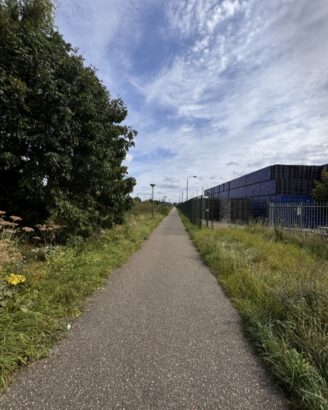
The hardest part, however, was packing the plants safely. When you go to an event like this, you might not know exactly what you’ll be bringing back, so it can be tricky to estimate what packing materials you’ll need. If you only have carry-on luggage, you can’t bring scissors on the plane either. Unless you buy scissors at the location (and discard them before your flight), you’ll have to manage all the packing without cutting anything. It took me about three hours to pack all the plants and play a game of Tetris to fit everything in. Since I ended up with more plants than I had planned, I decided to say goodbye to a pair of shoes. ( They were left at the airport with a note saying they were looking for a new home. 🙂 ) This way, I just barely managed to fit everything in. Not all the leaves made it through unscathed; two plants ended up with a few creases on their leaves, but that’s pretty good considering how tightly everything had to be packed. Miraculously, the A. longiloba ‘Purple’ arrived in perfect condition!
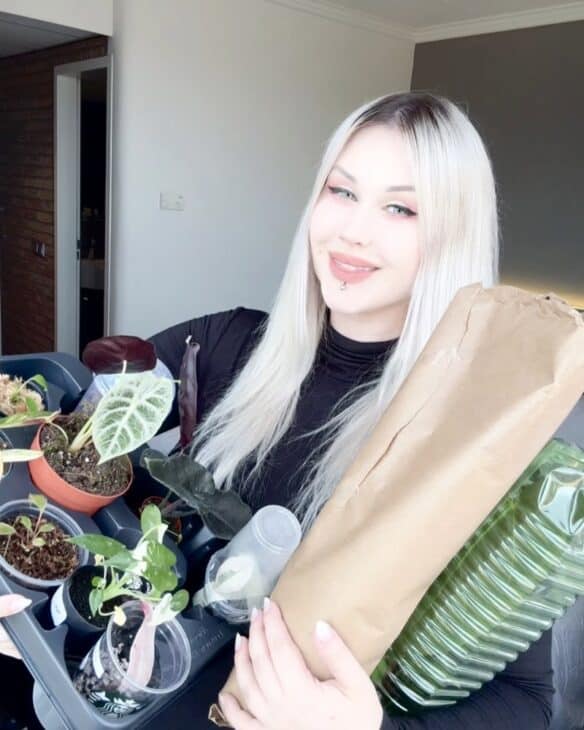
Summary
MyBotanika was an amazing experience! The event was well-organized, the people were friendly, purchasing was straightforward, and seeing so many plants was simply incredible. Of course, it requires a good financial situation, some investment, and the ability to travel smoothly, but if it’s within your reach, I highly recommend attending.
Tips:
- Bring cash! Cash was more commonly accepted than card payments.
- Get in line early at the airport gate to ensure your bag fits in the cabin. This way, you can calmly choose a space for it without having to squeeze or force it into place.
- Be prepared for your phone's internet to work poorly during peak times at the event. If you don't have cash, and the payment is requested via PayPal, you might have trouble connecting.
- Bring some sort of basket with you. Carrying your purchases around for 7 hours in impractical way can detract from your experience.
- Bring a water bottle. There is a café at Expo Houten, but if you're spending a long time at the event, you'll likely need hydration more frequently.
- If you want the best plants, be among the first to arrive. The early bird gets the worm!
- If you're looking for the best deals, wait until the very end of the event—vendors often offer 10-20% discounts at that time.
- If you can't decide, ask the vendor which plant they would choose if they were in your shoes. This is how PK Plants knew to recommend me an Okinawa that already had a baby plant growing next to it.
- Take advantage of raffles and gifts for early buyers.
- Bring items that you can easily discard if you need extra space to safely transport your plants home.

